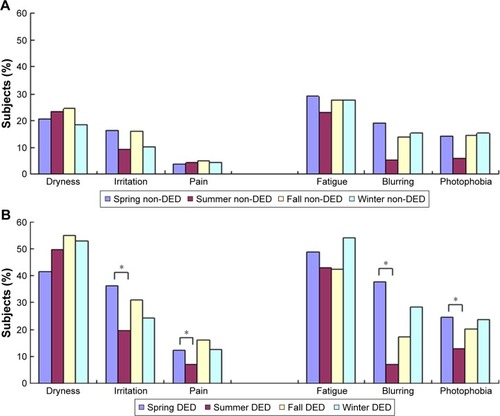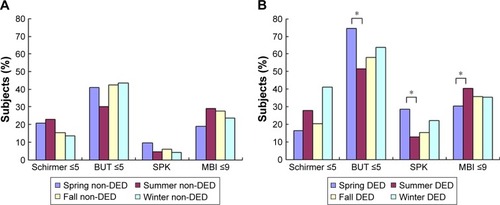Figures & data
Table 1 Patient characteristics
Figure 1 Presence of DED-related symptoms in (A) non-DED and (B) DED patients. Seasonal variation was observed for irritation, pain, blurring, and photophobia in DED patients, with symptoms being most severe in spring. Seasonal variation was also observed in the non-DED subjects, with symptoms being least severe in summer. There was no significant variation in the severity of symptoms between summer, fall, and winter in the non-DED subjects. *P<0.05 when the season with the most severe symptoms was compared to the season with the least severe symptoms (chi-square test).

Figure 2 Presence of DED-related signs in (A) non-DED and (B) DED patients. Seasonal variation was observed in BUT and SPK in the DED patients. Seasonal variation in all signs except for the Schirmer test was observed in the non-DED subjects. *P<0.05 when the season with the most severe symptoms was compared to the season with the least severe symptoms (chi-square test).

Table 2 Seasonal variations in DED signs and symptoms
